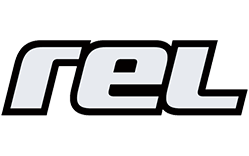Choosing your aggressive skates (1/2)
Choosing a pair of aggressive skates is not as easy as it seems. According to whether you are into street, park or ramp skating, the characteristics of the model you need may vary. Here are a few tips to find a suitable match...
Par alfathor

Skatepark, street or ramp?
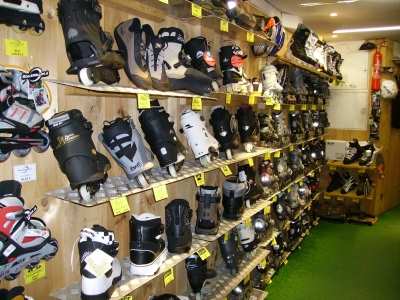 Before reading this article, if you are an absolute beginner, and if you are not familiar with the names of the various parts an aggressive skate is made of, we would advise you to read our article on the anatomy of an aggressive skate.
Before reading this article, if you are an absolute beginner, and if you are not familiar with the names of the various parts an aggressive skate is made of, we would advise you to read our article on the anatomy of an aggressive skate.
Which brand to choose?
Xsjado, Remz, Razors, USD? It might be a trick question!
Some will say that this brand is better than that one. If some arguments are justifiable, most of the time your foot will choose for you: Comfort remains one of the criteria that will make the difference. Take a skate in which you feel good!
Try the skates of your friends
Why not borrowing the skates of your friends with foot sizes close to yours before taking the step of buying your own pair? It will help you define if you feel comfortable in the skates you had in mind. If you have good sensations as soon as you’ve slipped your feet in, it’s a good start. Then you can, for example, test their rigidity, their flexibility, their stability in slides, etc.
Which budget?
Here again not everybody is on the same boat. Most of the time, a good pair of aggressive skates (for adults) costs between 130€ and 200€.
Your frequency of use can also influence your choice: Do you skate occasionally, regularly, intensively?
As for kids models, they are around 100€ —don’t forget to take into account that feet are still growing!
Which size to choose for adults?
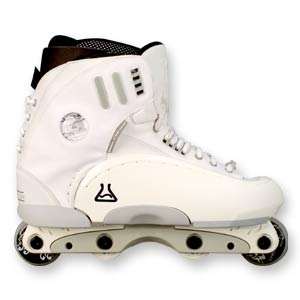 Warning! You’ll often hear from sellers that you should take one -even two- size bigger than your actual shoe size. It shouldn’t be systematically the case! All brands are not cut the same: some are cut small, or large, others are wider or narrower…
Warning! You’ll often hear from sellers that you should take one -even two- size bigger than your actual shoe size. It shouldn’t be systematically the case! All brands are not cut the same: some are cut small, or large, others are wider or narrower…
You should try on the skates to be sure you feel good and your foot is not too loose.
Moreover, too big skates will be harder to control and increase the risks of injury (strains for example).
Last but not least, often with use, the foam of the liner will break in and get thinner, which will give more room to your feet.
Which size to choose for a kid?
Lots of parents tend to opt for really big skates in order to compensate for the growth of their kids’ feet, and just add a insole or a second pair of socks.
It is understandable, skates are quite expensive, but as far as possible it is not recommended.
Adjustable skates can adapt to the size of your kid’s feet. They are sometimes equipped with interchangeable parts, but they are rarely used: Most of the time, juniors don’t destroy their skates as much as grown ups.
Semi-rigid boot or rigid shell?
Most of the time, beginners enjoy rigid shells because they feel reassured by the support they offer. Hardened street skaters will seek for more flexible skates for more precision in the stalling of their tricks. They go towards more open and lighter skates.
Another important detail about skate boots is the tightening: Give priority to metal micrometrical buckets, they are more shock resistant.
Besides, more and more skates are covered with an overboot. It is an outer skin made of synthetic leather that covers the shell for sheer aesthetic reasons. Indeed the design is improved, but in case of a fall that second skin tends to rip off more easily. Between rigid and aesthetic shells, make your choice!
Note: According to your discipline and your type of tricks, you will need more or less flexibility in your skates. For sliding, lots of skaters loosen their skates to gain in flexing possibilities and get lower.
For ramp skating, you tend to look for more rigid skates with more support.
Favor detachable liners!
Some models of street skates have their liners integrated to the shell, especially semi-rigid products. If indeed you gain in weight, you can’t maintain/wash your liners or change them if they are worn out. Opt for detachable liners as much as you can!
Freestyle frames
 This type of two-wheeled frame (and sometimes with anti-rockers) is mainly designed for a street use. The wide H-blocks and grooves are particularly used on walls and big rails.
This type of two-wheeled frame (and sometimes with anti-rockers) is mainly designed for a street use. The wide H-blocks and grooves are particularly used on walls and big rails.
Lots of skaters also use them in park. On the other hand, you won’t spot many of them in ramps.
Flat frames
having a flat set-up means that your 4 wheels touch the ground. Ramp-riders are the last die-hards who use that set-up to increase their speed.
Some skaters use flat frames in park but they are becoming rarer. The size of the H-block is about that of a coping tube, so that in ramp and park you can stall without stopping.
Bearings
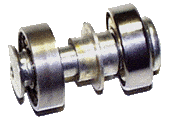 Lots of skaters are obsessed with the ABEC norm, that defines the precision of the balls in the bearings… Marketing is a powerful tool! It is often more about the brand and the materials the bearings are made of.
Lots of skaters are obsessed with the ABEC norm, that defines the precision of the balls in the bearings… Marketing is a powerful tool! It is often more about the brand and the materials the bearings are made of.
However, it should be put into perspective: In street, bearing precision isn’t always an advantage.
We would advise you to opt for ABEC 3 to 5 for street and 5 to 7 for skatepark/ramp. Above those numbers, the relative gain will only be worth it for very smooth riders. Otherwise you may smash your bearings to pieces at landing.
Screwing
In a general way, the screwing should be protected from shocks, friction and other ill-uses. Make sure that the screw heads of the skate you choose are well set inside, especially for the soulplate and the frame.
Besides, try to favor for 8 mm axles that won’t twist as easily as 6 or 7 mm axles.
Along the same lines, better opt for bearing spacers made of metal instead of plastic because they easily smash into pieces.
The pluses that make the difference
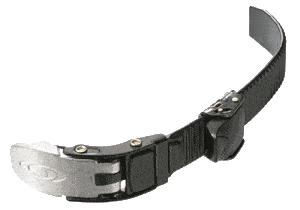 All skates available on the market don’t have the same features.
All skates available on the market don’t have the same features.
Think about comparing:
- Their flexibility (put them on and do a couple of squats)
- Their comfort (your feet will speak for themselves)
- Their cushioning (presence of shock absorber foam pads under the heels?)
- Their weight (weigh them up and compare)
- The possibility of dismantling the wearing parts (soulplate, h-block, liner…)
- The possibilities of customization (UFS frame?)
- The width of the soul plates (the wider, the more stable for slides — egg. Widebody by Salomon)
- The presence of protective reinforcements in case of a fall
Can the wearing parts be dismantled and can they be replaced?
Equipment is put to a severe test in street skating. Look for a skate the main wearing parts of which you can easily replace: wheels, bearings, frames, but also soulplates!
Manufacturers release more and more products that can be entirely dismantled and customized.
Lexicon of complex words
ABEC: Norm of precision of the bearing balls. It is quite obsolete. It goes by odd numbers in ascending order: 1, 3, 5, 7, 9… The higher the number, the rounder the ball.
 Anti-rockers: Small middle wheels that replace classic wheels in order to make the stalling easier on large rails and walls.
Anti-rockers: Small middle wheels that replace classic wheels in order to make the stalling easier on large rails and walls.
H-block: Middle part of the frame, in-between the middle wheels, on which you can slide. It is also called a notch.
Overboot: Synthetic outer skin covering the rigid shell for aesthetic purposes only.
Rider: Person who does skating/sliding sport
Soulplate: Wide parts on the sides of the frame on which riders slide when they stall on walls or modules.
Street: In the narrow sense, practicing aggressive skating in the street (in opposition to park and ramp.) In the broad sense, this term often designates the practice of aggressive skating in general.
UFS: Universal Frame System. Norm of frame dimension created by Salomon. It has become a standard. A skate meeting the UFS norm can be mounted with UFS frames of different brands.
Useful links
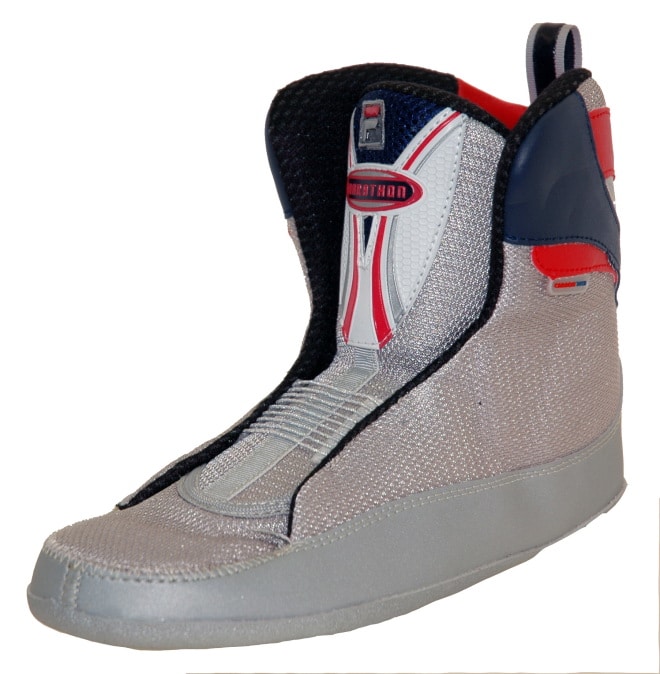
Anatomy of a pair of aggressive skates
Buying second hand skates
Choosing your wrist guards
Choosing your aggressive skates (2/2)
Choosing your fitness skates
Choosing your long distance skates
Choosing your slalom skates
Choosing your freeride skates
Choosing your skates in sizes 45+
Protective gear in skating
Choosing your skate rubber brakes
Choosing your frames for aggressive, street, ramp, park skating
Choosing kids skates
Choosing your roller hockey skates
Choosing your speed skating frames
Choosing your speed skating frames — by Yann Guyader
Choosing your speed skates
Translation: Chloe Seyres
